
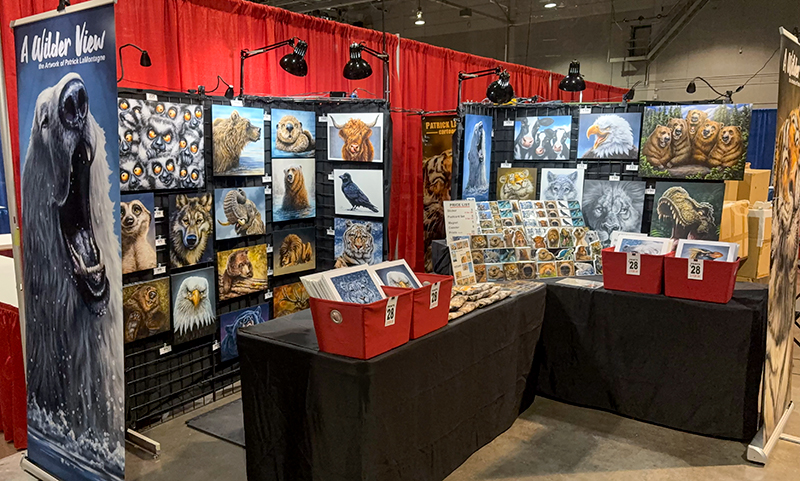
The Calgary Expo is always exhausting but usually a positive overall experience.
This year, I went into it feeling burnt out, mainly because of how closely I’ve had to follow the rapidly changing news lately and how much it has personally bothered me. I think I foolishly thought Expo might fix that.
Many things that could have gone wrong in preparation and execution went as well as expected. I got my hotel and booth early, load-in went well, there were no problems with setup, and it seemed off to a good start. Even my new payment system worked flawlessly all four days.
But earlier in the week, I realized I wasn’t looking forward to Expo like usual. I went into it feeling a little desperate for a good show. So, when sales were slow, and the whole vibe felt off, I considered it might be my fault, that I was failing to project the right attitude.
Talking with other vendors throughout the weekend, however, with a noticeable drop in customer traffic, it quickly became apparent that it wasn’t just me.
We couldn’t help but speculate amongst ourselves — what was going on?
Was it the new layout? The events portion of the show moved to the second and third floors of the new BMO Centre. In previous years, attendees would end up in retail spaces while moving between panels and talks. When people left those scheduled events this year, it seemed like many just went outside or crowded the exterior aisles on their way to somewhere else.
Perhaps it was the economy. With all the bad news flooding across the border these past few months, people are nervous and watching their money. It seemed like many had less to spend, and I saw far fewer new people in my booth than I’m used to. I’ve never seen a quiet Saturday at the Calgary Expo; it’s usually a crazy busy day. My best sales day this year was Friday. That has never happened before.
I’m used to each year proving as good or better than the year before. I’ve never had a down year. My friend Ryan had a booth a couple of aisles away from me. He was right when he said, “Every year can’t break records.”
Because I keep meticulous records and inventory, I know that this year’s sales were down 16% over last year. That may not seem like much, but this is an expensive show. The price of my booth, electrical, insurance, parking and hotel all went up this year. So, depending on the year, the first 35% to 50% of sales cover that initial expense. That’s before I factor in the cost of my product.
For this show, 16% off the top is significant. I didn’t talk to one vendor who said their sales were good this year.
The show was still well worth my time and investment, and on the last day, I rebooked for next year as I always do.
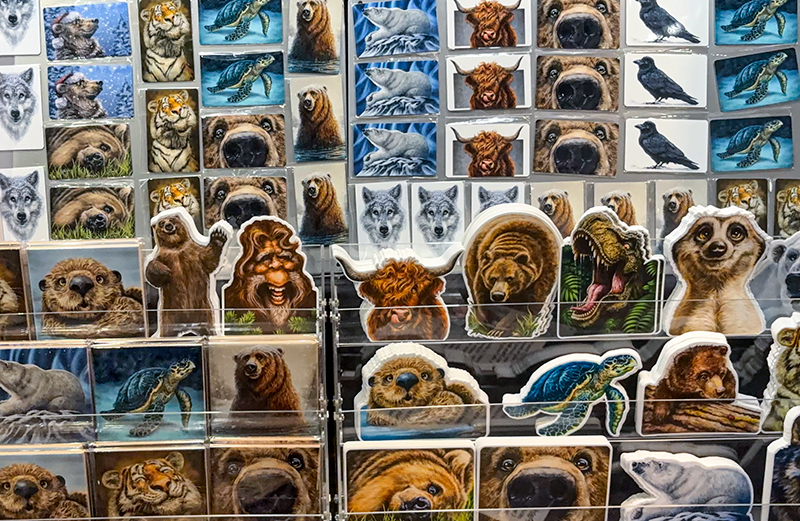 At the show’s end, tearing down took about an hour and a half. But the line-up of cars to access the loading docks was ridiculously long. I have a sturdy hand dolly that transforms into a robust cart. It was quicker for me to haul my booth out in three trips through two large halls to the other side of the building where I had parked my car. That took another hour, but it was better than sitting in a long line of vehicles for all that time.
At the show’s end, tearing down took about an hour and a half. But the line-up of cars to access the loading docks was ridiculously long. I have a sturdy hand dolly that transforms into a robust cart. It was quicker for me to haul my booth out in three trips through two large halls to the other side of the building where I had parked my car. That took another hour, but it was better than sitting in a long line of vehicles for all that time.
I’ll admit that I felt a little sorry for myself on the drive home Sunday night, that the show wasn’t as good as I’d hoped or expected. But after some sleep and time to reflect, I have corrected my perspective.
While the goal is always to introduce my work to new people and find new subscribers, and there weren’t as many of those opportunities this year, the best part of Expo is all of you who keep coming back to see me year after year.
With a sincere hand-on-heart, I want to thank my many repeat customers, collectors, subscribers and supporters who showed up this year.
I met several people who came to the show just because they read about it in A Wilder View, some of whom I met for the first time. I often think what I write on my site and in my emails is self-indulgent drivel, but you keep telling me that you look forward to each email and enjoy what I share.
One enthusiastic subscriber who’s been buying my calendars from Australia for several years just immigrated to Canada and came to Expo to meet me for the first time. In an email exchange after the fact, he said, “You’re such a positive and inspiring person.”
Feroze, are you sure you’re reading MY emails?
I kid.
Even though this is precisely what I always wanted, I’ve never been comfortable with so many of you having my art on your walls or stickers on your cars, kayaks and water bottles and that you say such nice things about my work and writing.
Many of you have way more prints, stickers, magnets, coasters and other pieces than I thought you did.
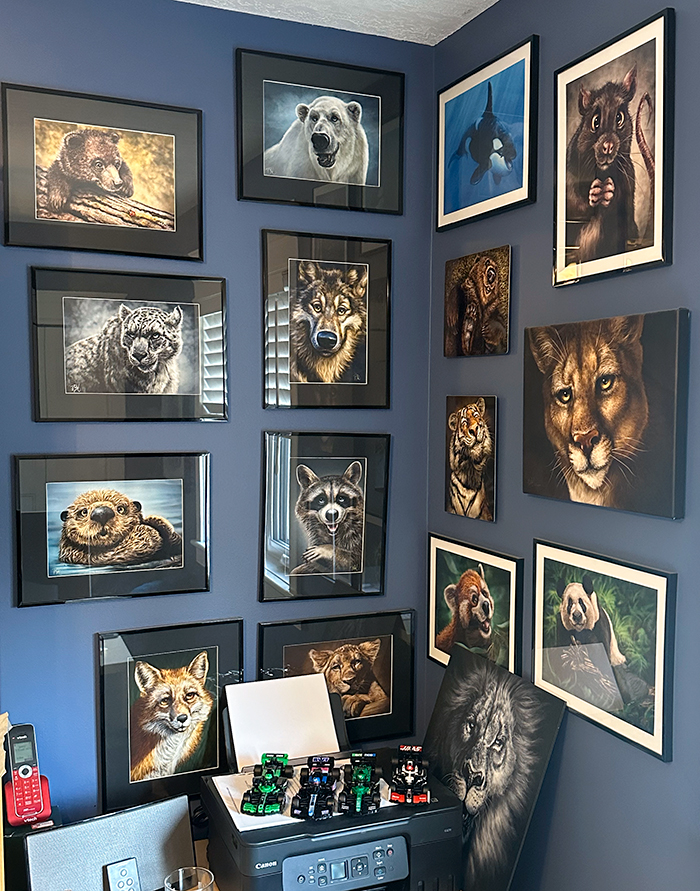
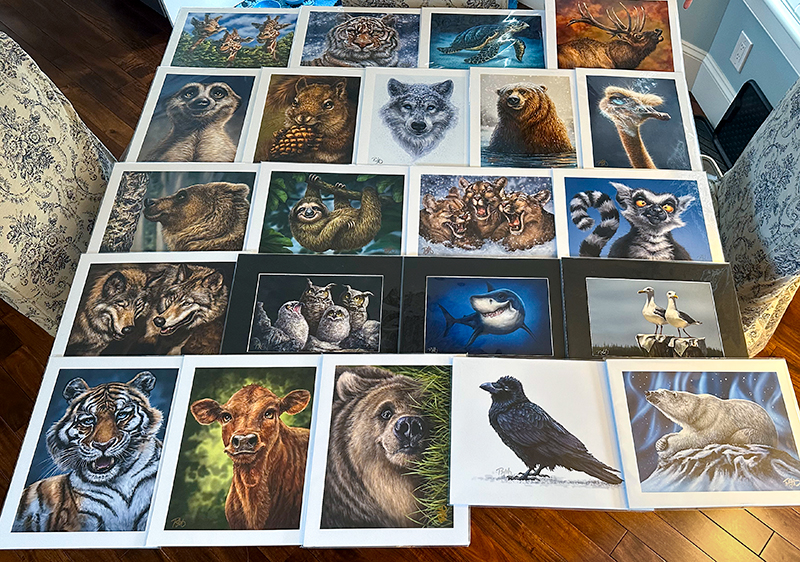
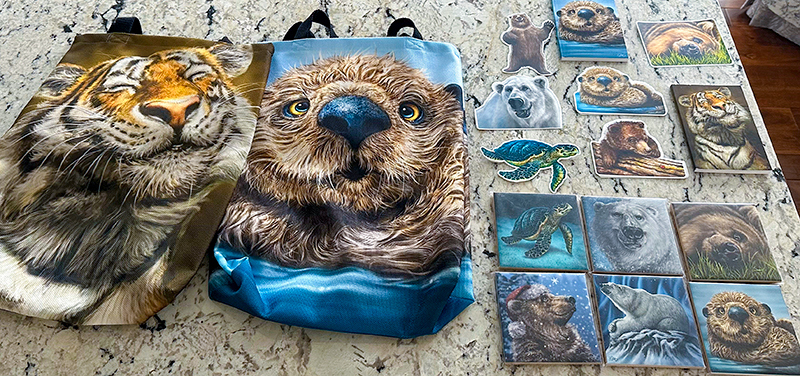 Though I saw them all weekend, Tracy and Sheldon took these photos of their collection Saturday night and shared them by text. They rotate their prints in what they call Critter Corner. When I saw these photos, I joked that I felt like a drug dealer and it might be time for an intervention, especially since they bought more prints and tote bags this weekend.
Though I saw them all weekend, Tracy and Sheldon took these photos of their collection Saturday night and shared them by text. They rotate their prints in what they call Critter Corner. When I saw these photos, I joked that I felt like a drug dealer and it might be time for an intervention, especially since they bought more prints and tote bags this weekend.
You two would be dangerous if you weren’t such lovely people.
I was reminded this weekend that so many of you have large collections. You know who you are, and I only refrain from listing all your names because I would forget somebody, and I don’t want to offend anyone.
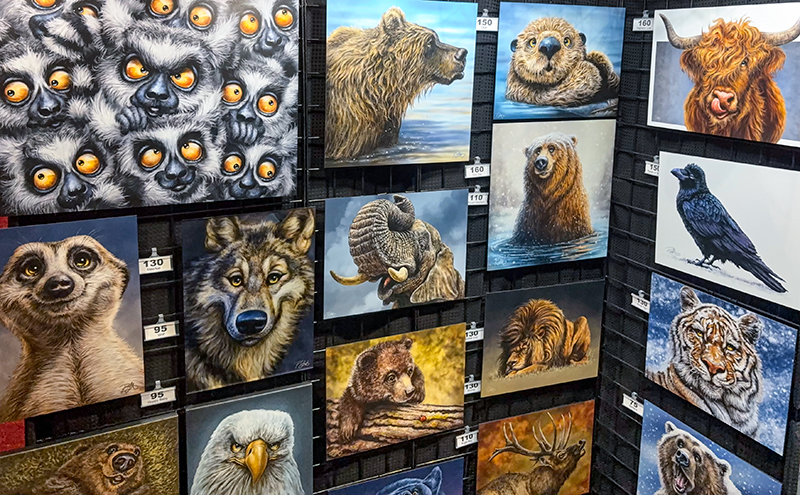 Long-time collectors also bought canvas, metal and acrylic prints this weekend. I have more of those orders to fill this week. I talked with former commission clients and ones whose paintings I’m just about to start. I got the usual gentle pressure about the book, which I never seem to gain traction on, and a few offered welcome suggestions on which animals I might consider painting next.
Long-time collectors also bought canvas, metal and acrylic prints this weekend. I have more of those orders to fill this week. I talked with former commission clients and ones whose paintings I’m just about to start. I got the usual gentle pressure about the book, which I never seem to gain traction on, and a few offered welcome suggestions on which animals I might consider painting next.
I can’t adequately express how humbling it is that you enjoy my artwork this much.
So perhaps I needed a lesson this year at Expo that even when sales are down, it is just one event in one year, and it comes and goes so quickly. All of you who continue to allow me to do this for a living, whether you can show up to Expo to show your support in person, were already here before the show, and you’re still here afterward.
I need to remember that it’s a gift that, once a year, I get to see so many of you in person. Because every time I do, you make me want to make more art.
Thank you.
Cheers,
Patrick


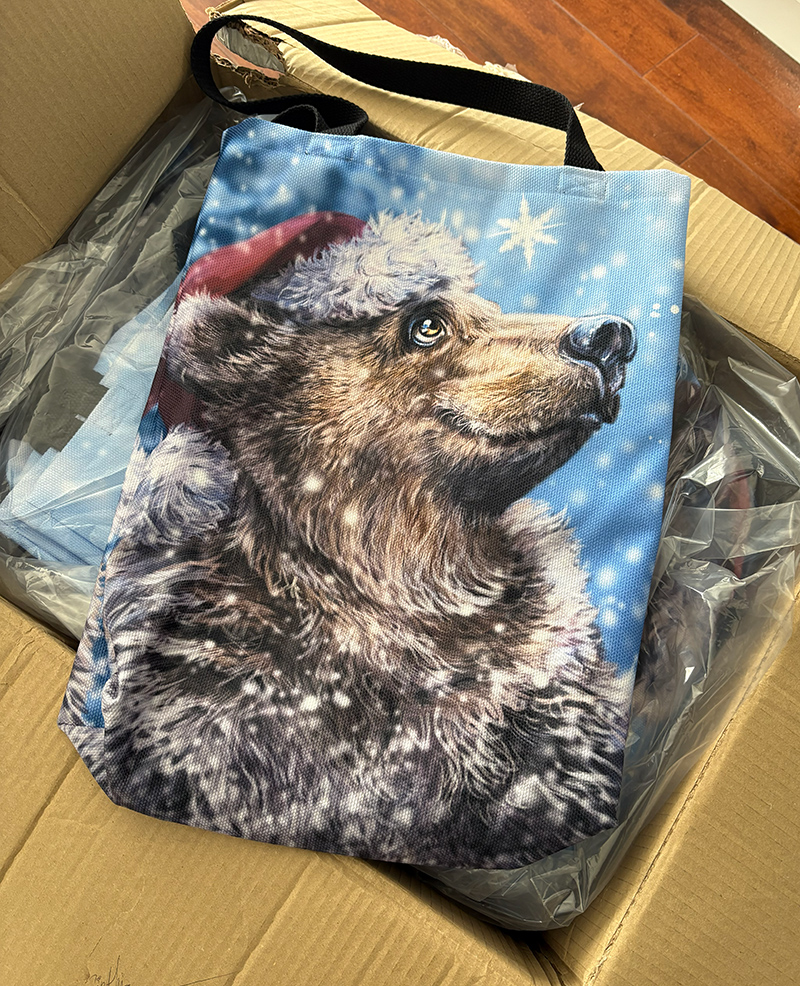 Best of all, it’s the last product order I’ll need before the month-long market begins on November 20th. With just over a month to sign and package prints, enter inventory into my sales app, update spreadsheets, and finish everything else I’ve got on deck, I’m grateful not to be waiting on any more deliveries.
Best of all, it’s the last product order I’ll need before the month-long market begins on November 20th. With just over a month to sign and package prints, enter inventory into my sales app, update spreadsheets, and finish everything else I’ve got on deck, I’m grateful not to be waiting on any more deliveries.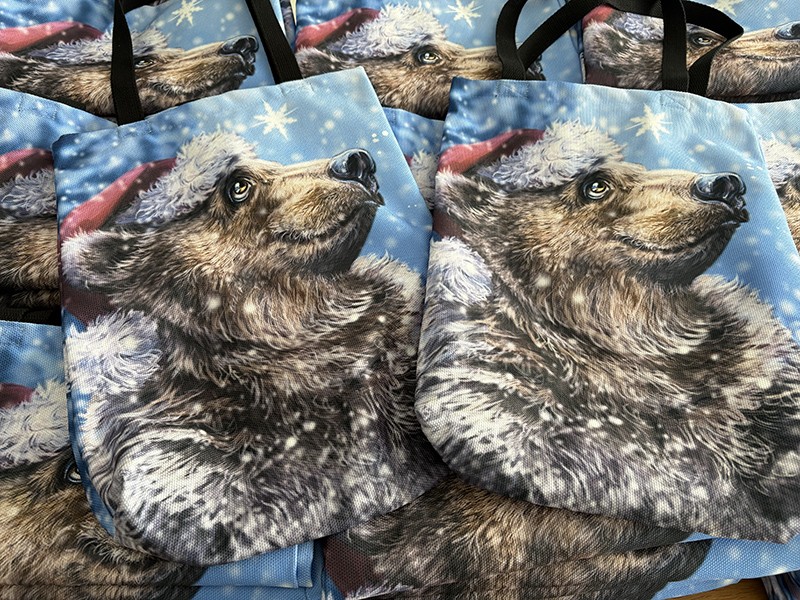 Shipping
Shipping
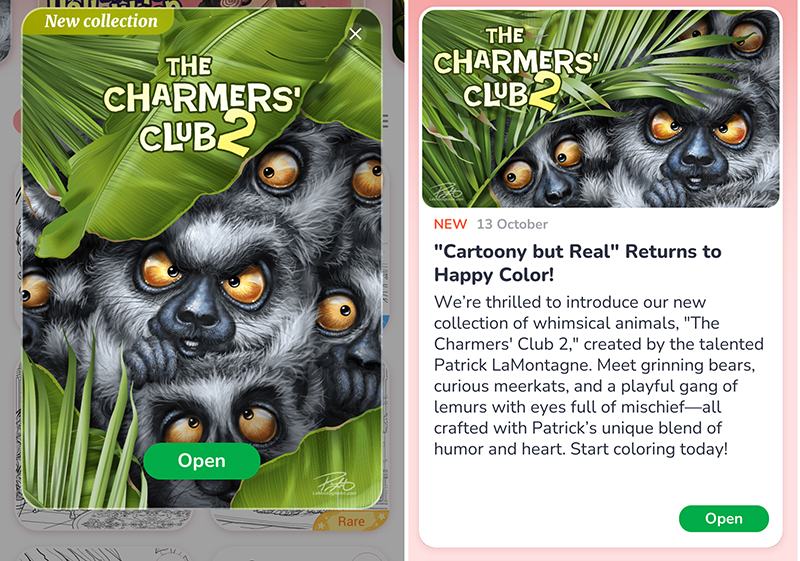



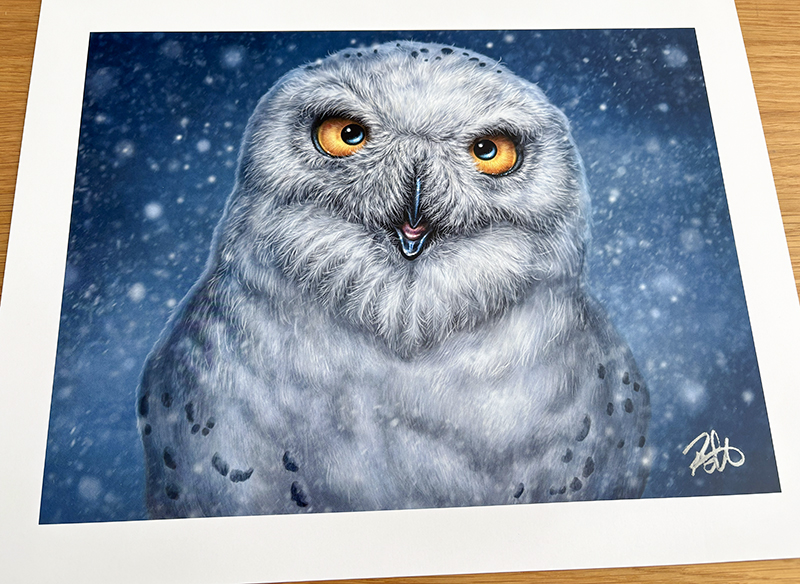 Each of my poster prints is hand-signed, and the Zoo got the very first print of my latest Snowy Owl painting. It’s always a nice feeling to see a new piece in print for the first time.
Each of my poster prints is hand-signed, and the Zoo got the very first print of my latest Snowy Owl painting. It’s always a nice feeling to see a new piece in print for the first time. They also produce the calendar many of you look forward to each year. That means I get to sell my own artist edition while the same calendar reaches stores I could never reach myself. Some of you on Vancouver Island have even told me you already picked up your 2026 calendar before I got mine.
They also produce the calendar many of you look forward to each year. That means I get to sell my own artist edition while the same calendar reaches stores I could never reach myself. Some of you on Vancouver Island have even told me you already picked up your 2026 calendar before I got mine. If you’ve ever bought a magnet or coaster from me at the
If you’ve ever bought a magnet or coaster from me at the 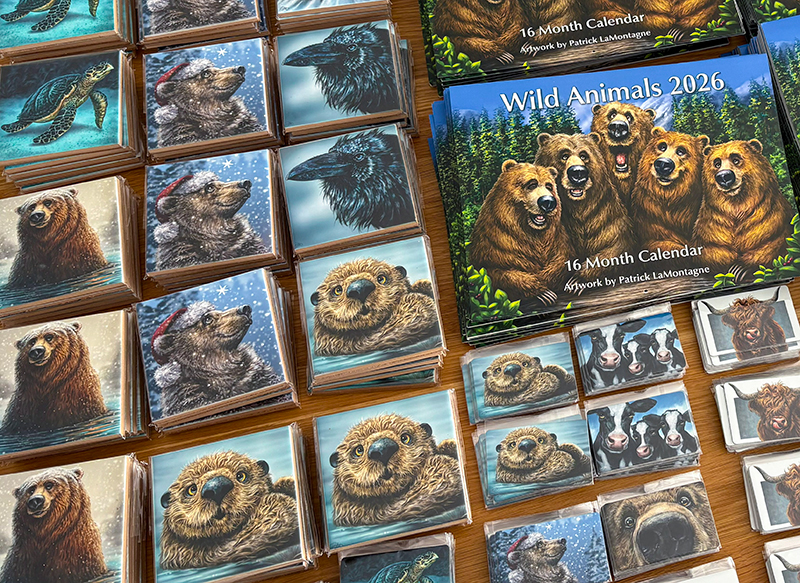 So yes, you have to spend money to make money, but placing large orders like these is a serious expense, often weeks or months ahead of actually selling anything. Anyone who’s ever kept retail inventory knows the feeling. It’s something I never get used to and it puts me on edge.
So yes, you have to spend money to make money, but placing large orders like these is a serious expense, often weeks or months ahead of actually selling anything. Anyone who’s ever kept retail inventory knows the feeling. It’s something I never get used to and it puts me on edge.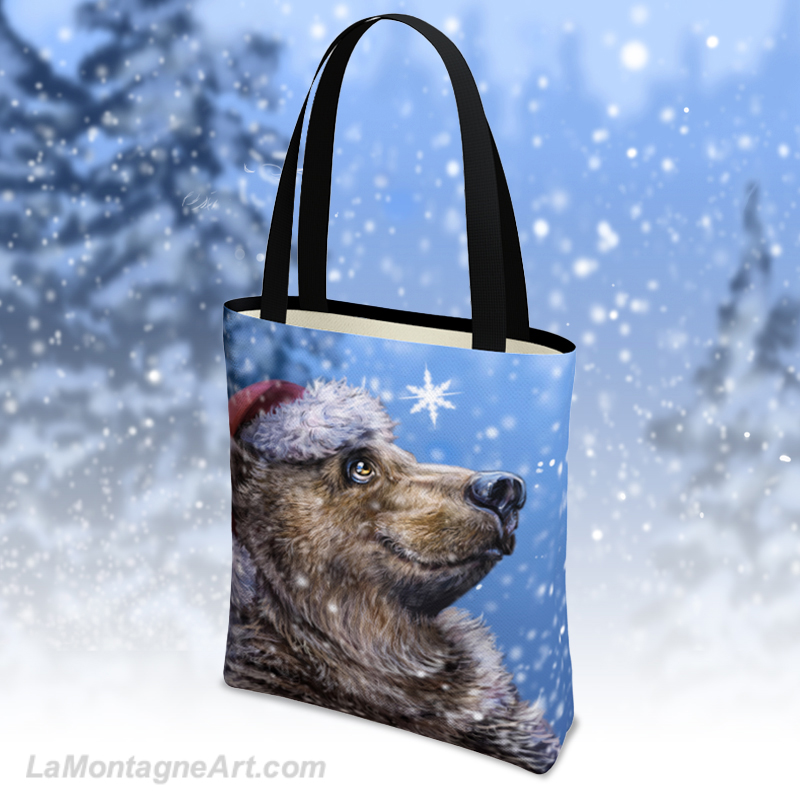 My last outstanding order, custom tote bags featuring my Christmas Bear painting, has shipped from Montreal by courier and is scheduled to arrive next week. Thankfully, that one’s unaffected and on track.
My last outstanding order, custom tote bags featuring my Christmas Bear painting, has shipped from Montreal by courier and is scheduled to arrive next week. Thankfully, that one’s unaffected and on track.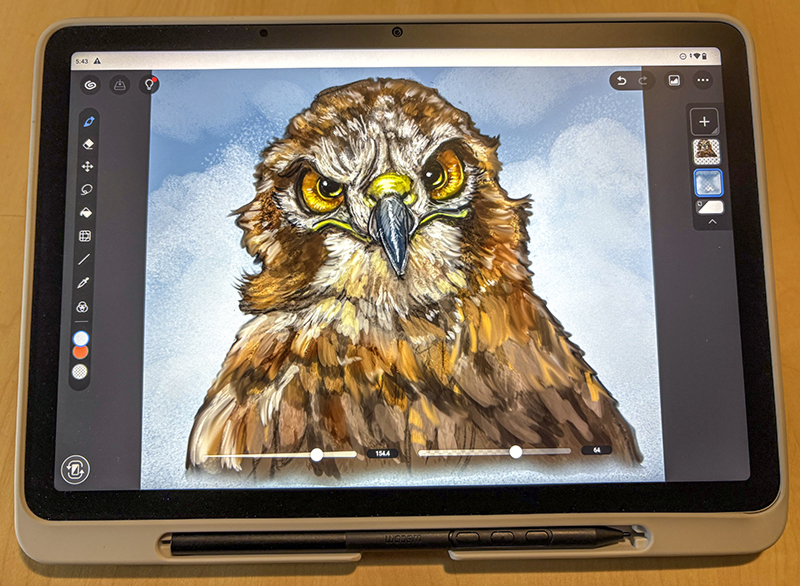 I’m also creating a project for
I’m also creating a project for  Here in Canmore, we got our first snowfall last Saturday. Most of it melted in the valley by Sunday afternoon, but the mountains stayed white for a few days longer. If this isn’t the best view from any Safeway in Canada, it’s at least in the top three. Helps (a little) to soften the shock of the ridiculous grocery prices around here.
Here in Canmore, we got our first snowfall last Saturday. Most of it melted in the valley by Sunday afternoon, but the mountains stayed white for a few days longer. If this isn’t the best view from any Safeway in Canada, it’s at least in the top three. Helps (a little) to soften the shock of the ridiculous grocery prices around here. But I was biking my errands in shorts again yesterday and snapped this pic of Policeman’s Creek.
But I was biking my errands in shorts again yesterday and snapped this pic of Policeman’s Creek.
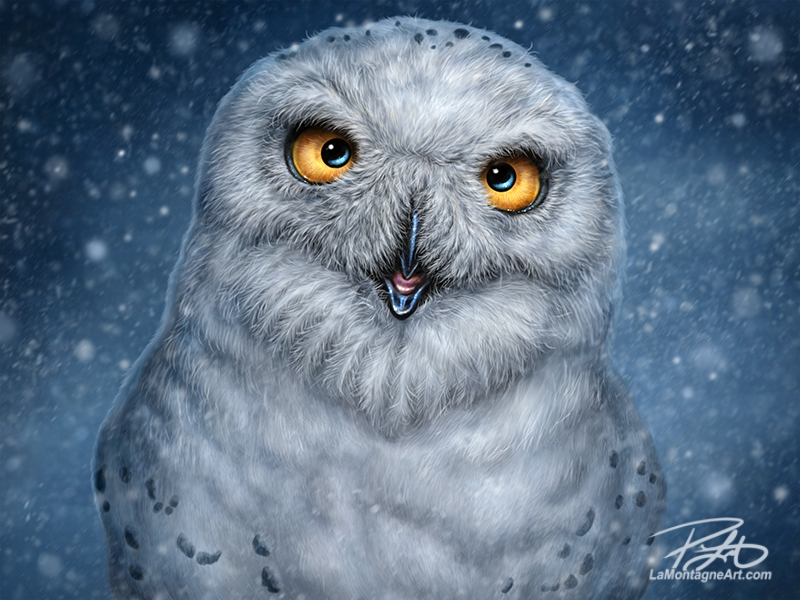
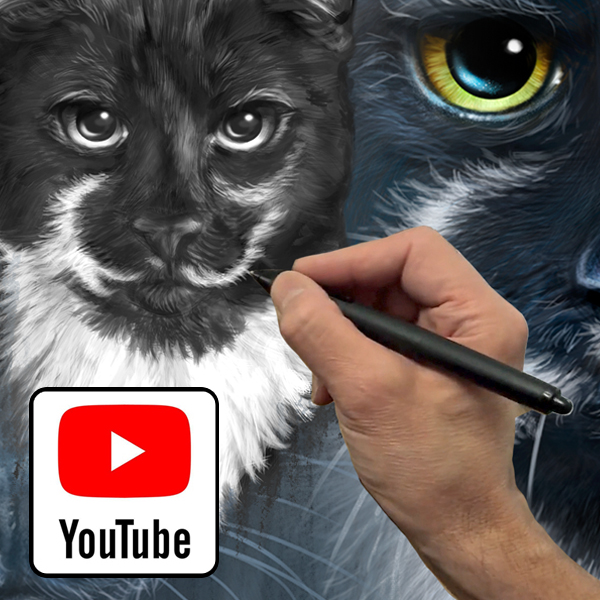

 After wrapping up the three-cat commission I’ve been working on (and talking about) for the past couple of months, I needed a reset. Not a full break—but something without expectations, pressure, or deadlines. Just a chance to paint for myself again.
After wrapping up the three-cat commission I’ve been working on (and talking about) for the past couple of months, I needed a reset. Not a full break—but something without expectations, pressure, or deadlines. Just a chance to paint for myself again.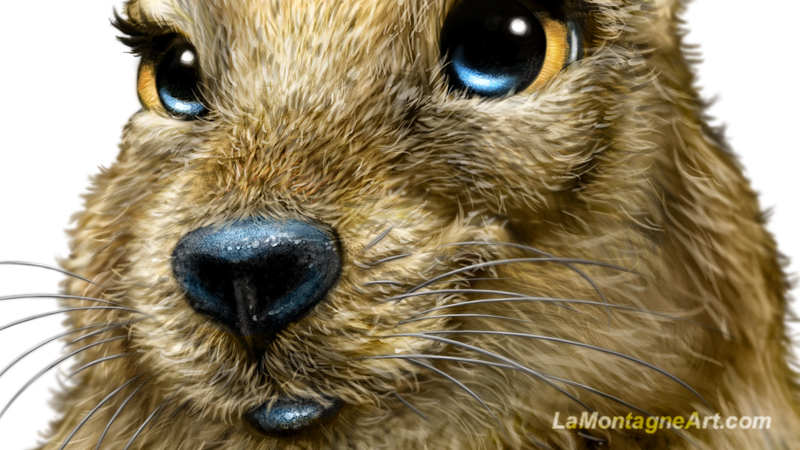

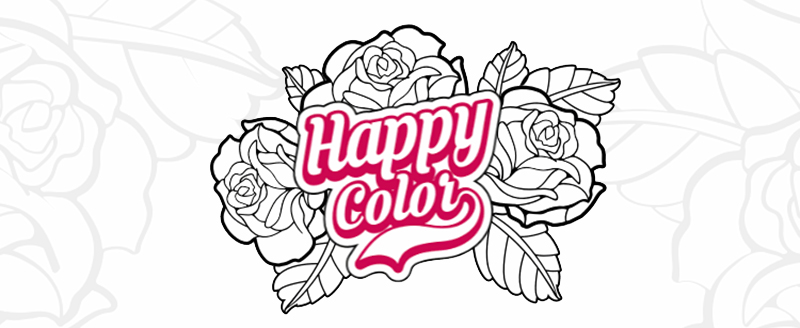
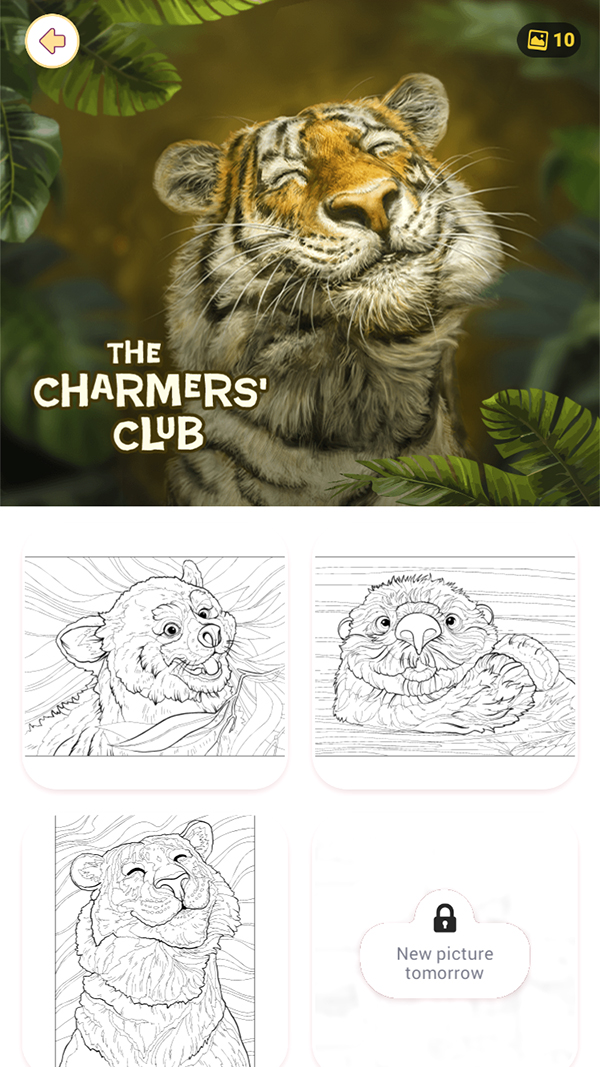
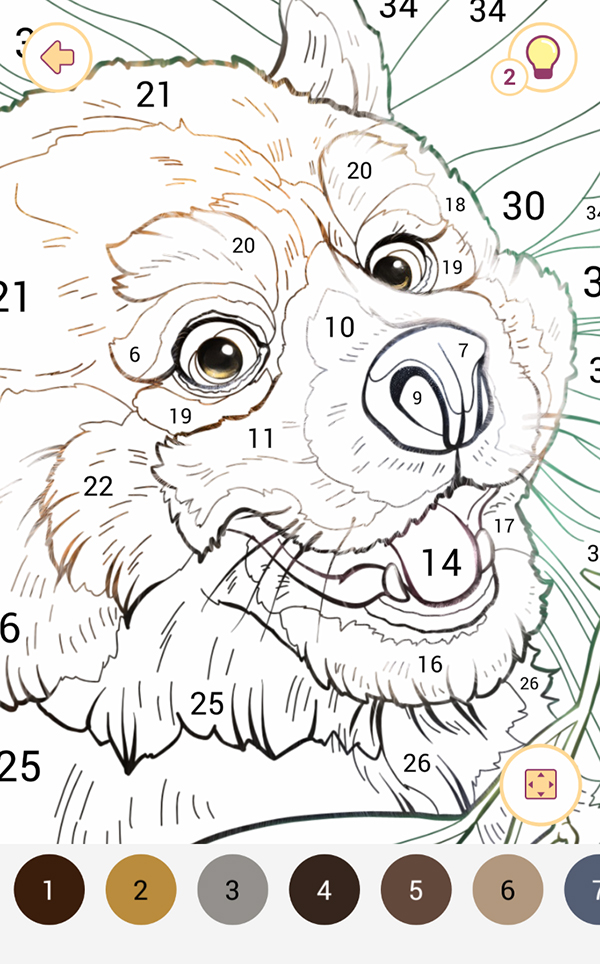
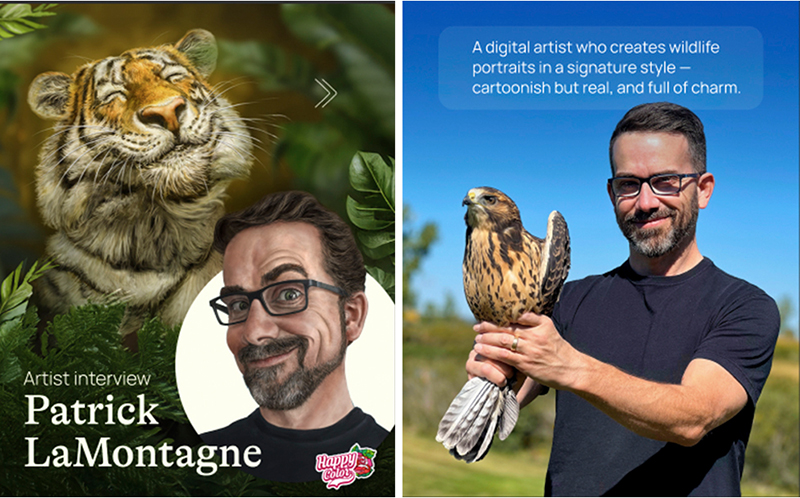
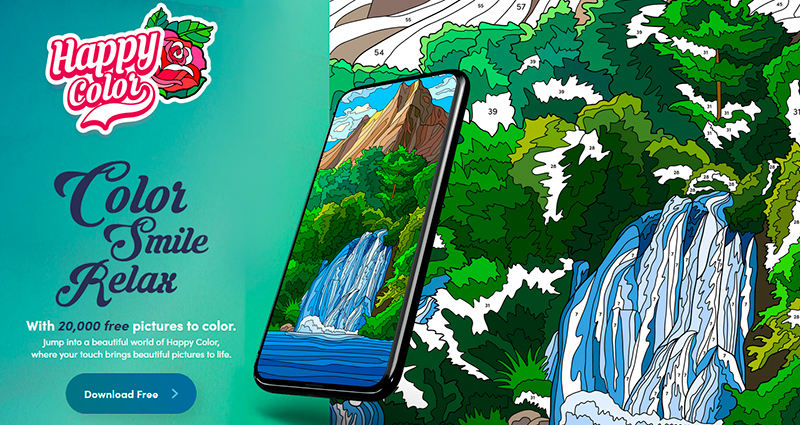
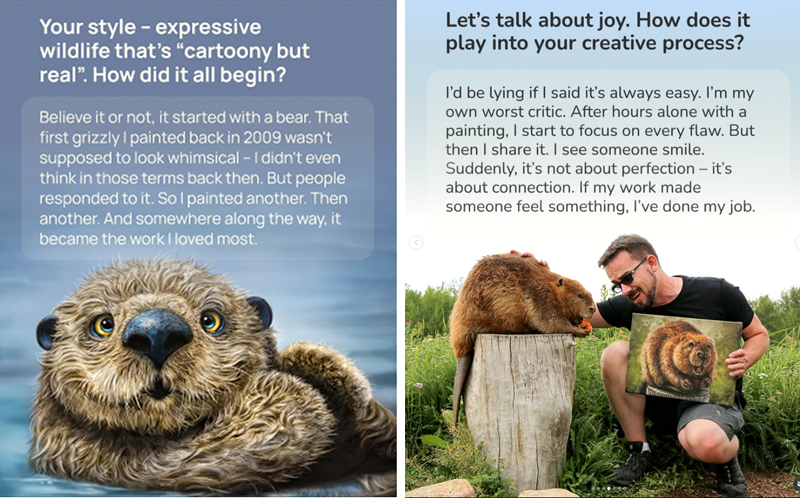
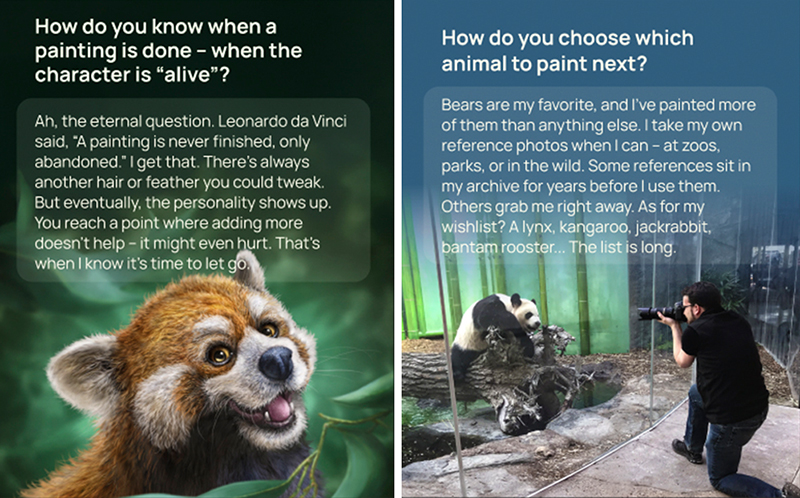
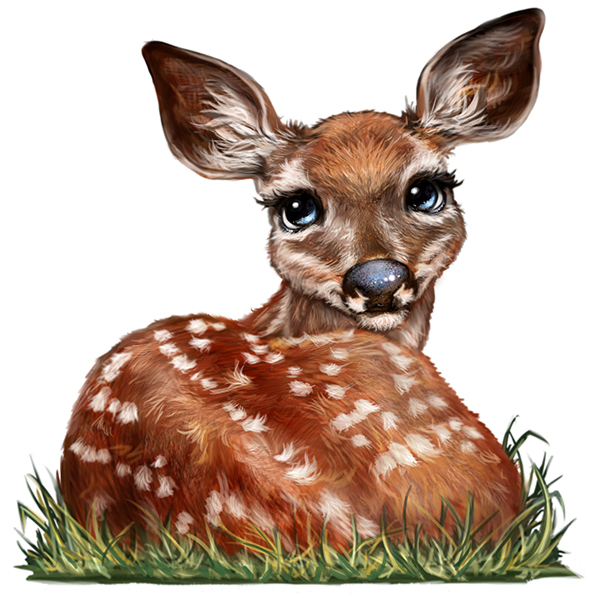
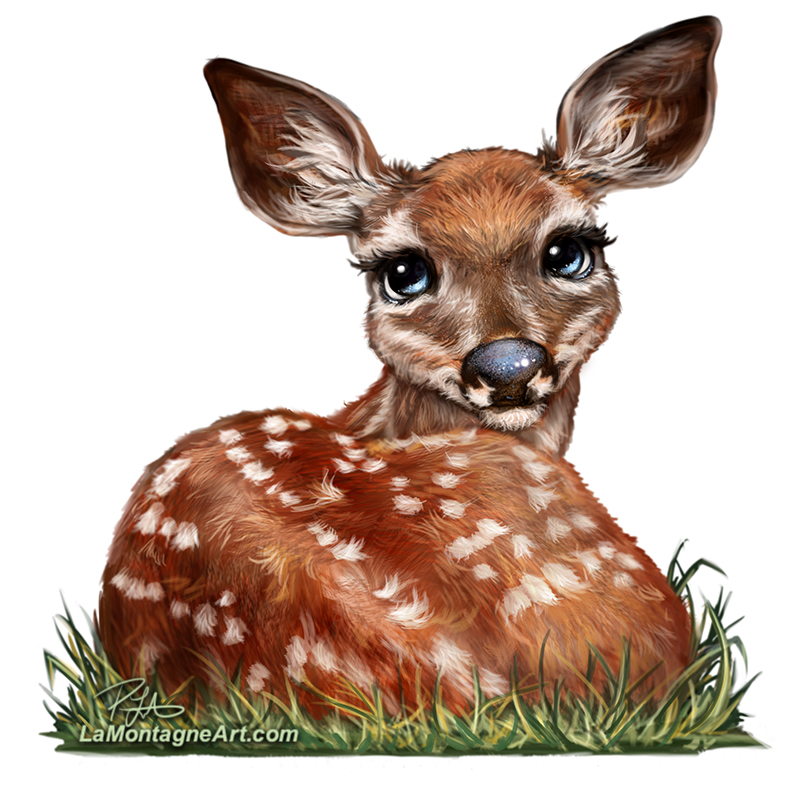 I’ve been working on a commission of three cats, and it’s coming along well. The client has provided some valuable feedback on the images I’ve shared so far. I’ve also recorded a bunch of the process, written the video narrative, and I’m still working on that video and the painting itself.
I’ve been working on a commission of three cats, and it’s coming along well. The client has provided some valuable feedback on the images I’ve shared so far. I’ve also recorded a bunch of the process, written the video narrative, and I’m still working on that video and the painting itself.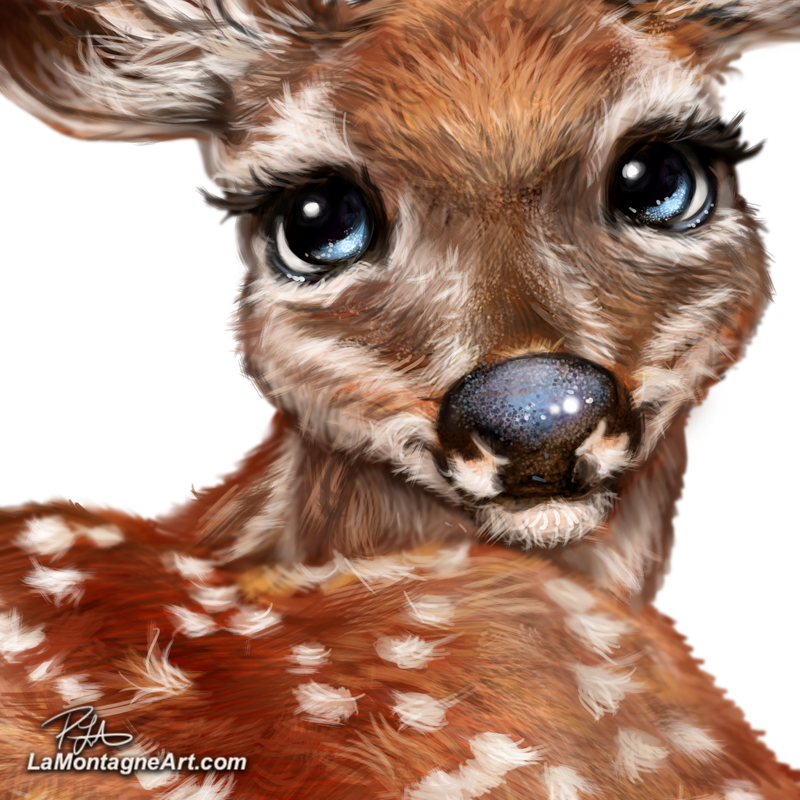 I based this little fawn on reference I shot at
I based this little fawn on reference I shot at 
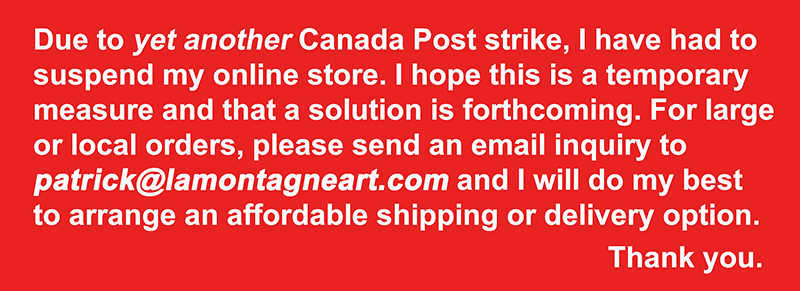
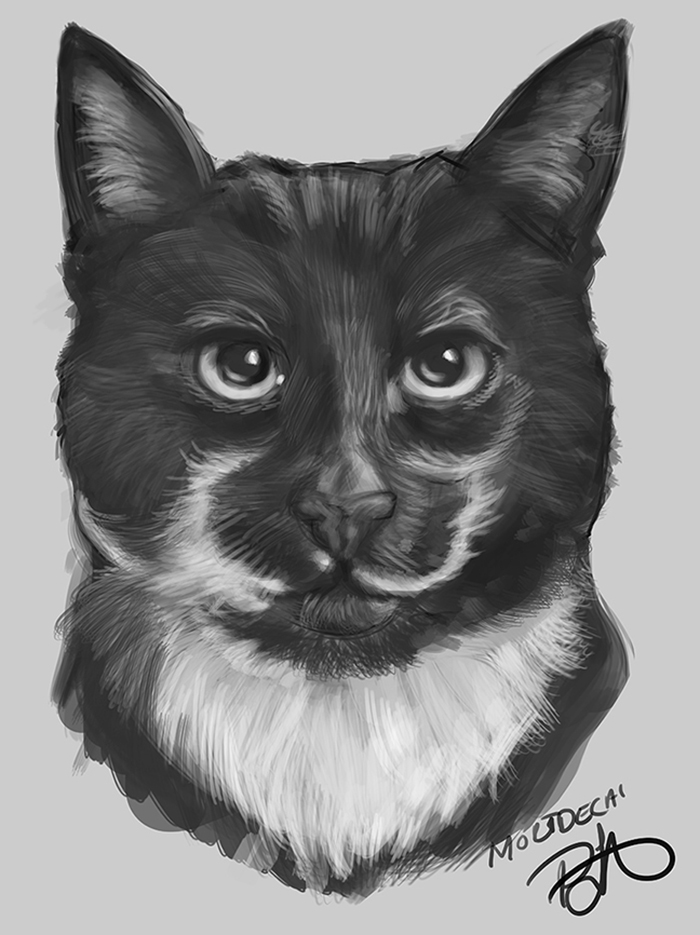 When I’m doing commissions and editorial work, that usually means less time for whimsical wildlife. But if I want to have anything to share with you all, I need to loosen the reins a bit.
When I’m doing commissions and editorial work, that usually means less time for whimsical wildlife. But if I want to have anything to share with you all, I need to loosen the reins a bit.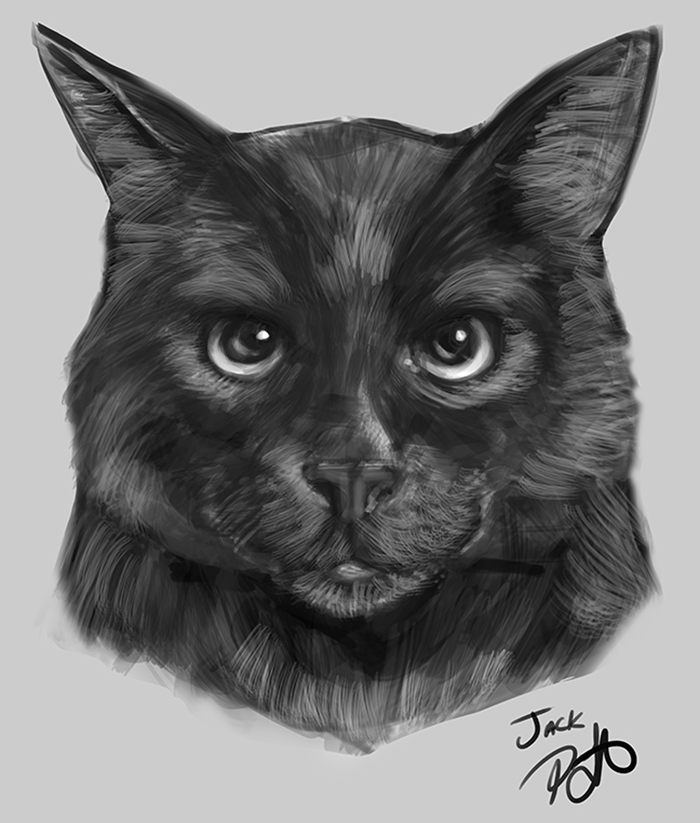 Recording the painting process as I go, I’ll add some narration once I wrestle this new video software into submission. I’m hoping to share it in a week or two.
Recording the painting process as I go, I’ll add some narration once I wrestle this new video software into submission. I’m hoping to share it in a week or two.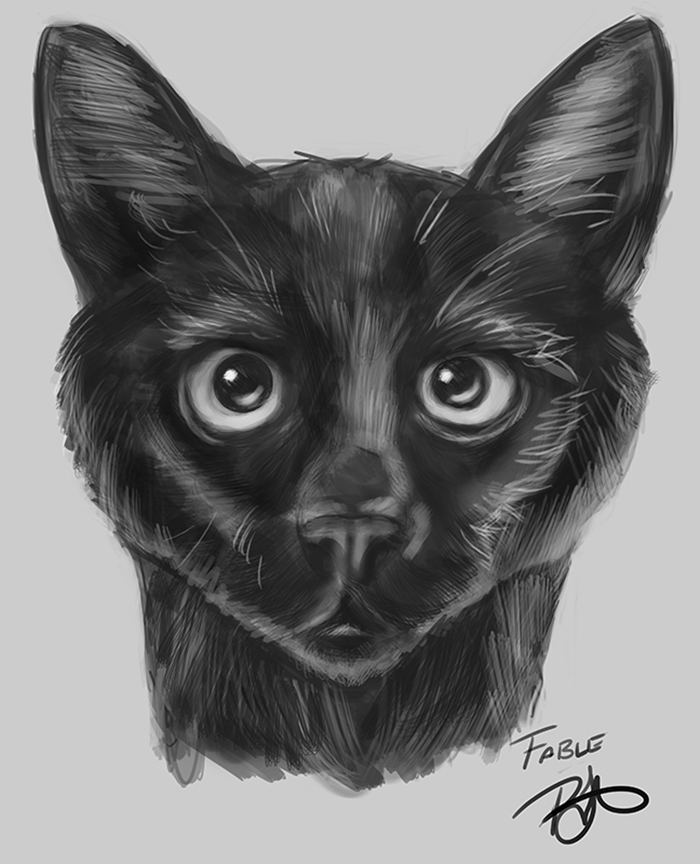 My client kindly gave me permission to share these images and the upcoming video. And since many of you have told me you like seeing how the sausage is made, I’ll be sharing more of that this year.
My client kindly gave me permission to share these images and the upcoming video. And since many of you have told me you like seeing how the sausage is made, I’ll be sharing more of that this year.
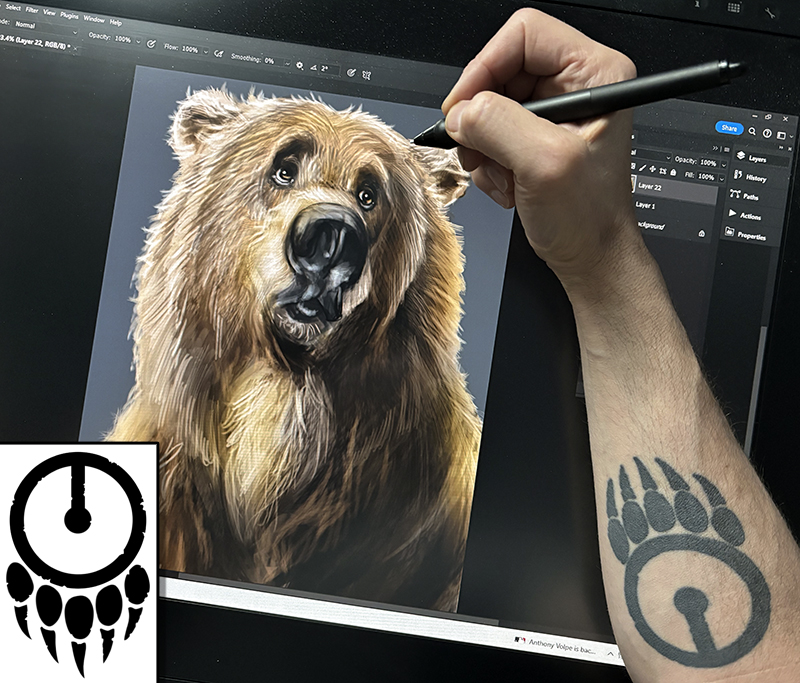 People often ask what it means. If I’m that solitary dot in the middle, my best chance of connecting with others is through my artwork, represented by the bear claws. But just as important is the reverse, where nature, wildlife and the world around me deliver the inspiration to create more art.
People often ask what it means. If I’m that solitary dot in the middle, my best chance of connecting with others is through my artwork, represented by the bear claws. But just as important is the reverse, where nature, wildlife and the world around me deliver the inspiration to create more art. 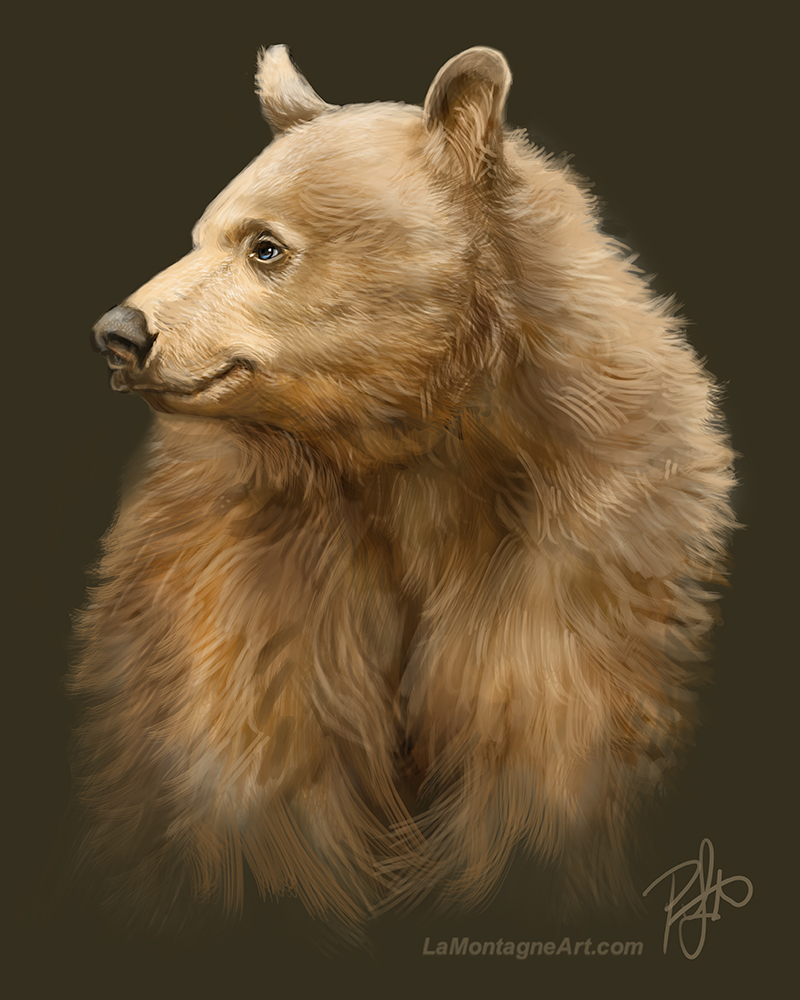 I have been frustrated the past few years that it seems I can never get as much done as I would like to, still failing to find traction. I have too many ideas, too much ambition, and little time to do it all. As fiction writers need to aggressively edit and ‘kill their darlings’ to make for a better story, I must abandon some things to make progress on the ones that mean the most to me.
I have been frustrated the past few years that it seems I can never get as much done as I would like to, still failing to find traction. I have too many ideas, too much ambition, and little time to do it all. As fiction writers need to aggressively edit and ‘kill their darlings’ to make for a better story, I must abandon some things to make progress on the ones that mean the most to me.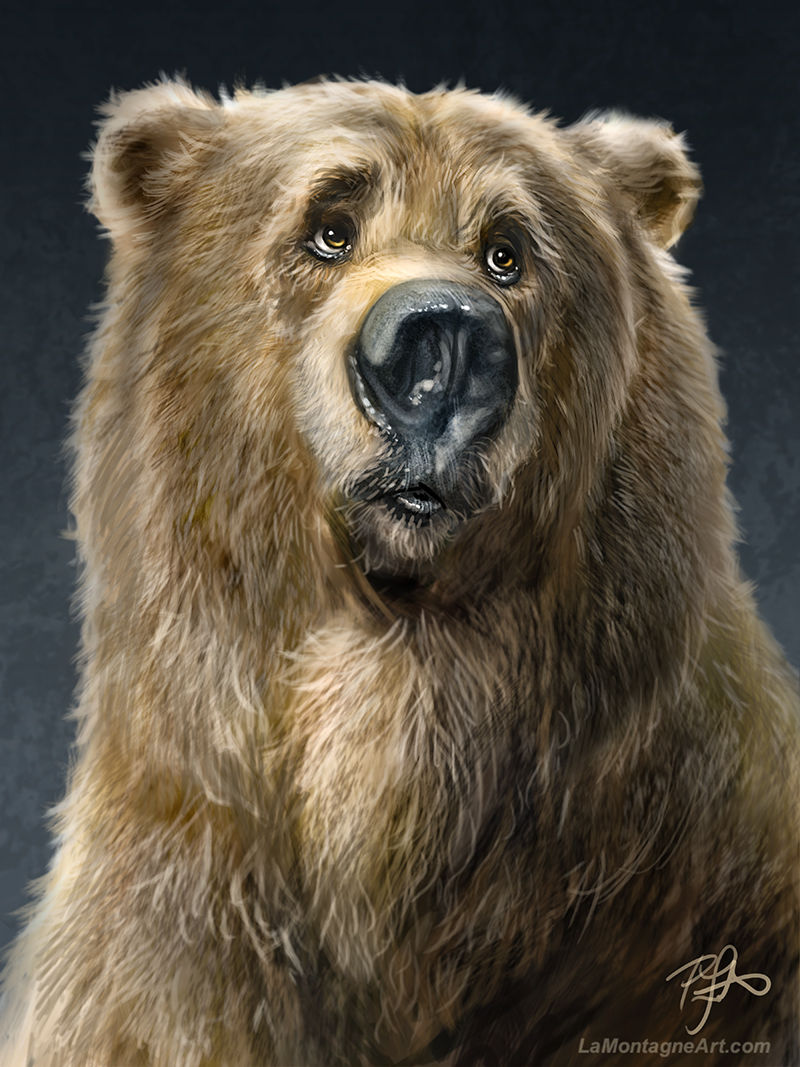 I haven’t painted anything in a month and needed to get back into the groove. These were supposed to be rougher sketches, but it’s difficult to stop once I get going. These are neither sketches nor finished paintings, but somewhere in the middle.
I haven’t painted anything in a month and needed to get back into the groove. These were supposed to be rougher sketches, but it’s difficult to stop once I get going. These are neither sketches nor finished paintings, but somewhere in the middle.

 At the show’s end, tearing down took about an hour and a half. But the line-up of cars to access the loading docks was ridiculously long. I have a sturdy hand dolly that transforms into a robust cart. It was quicker for me to haul my booth out in three trips through two large halls to the other side of the building where I had parked my car. That took another hour, but it was better than sitting in a long line of vehicles for all that time.
At the show’s end, tearing down took about an hour and a half. But the line-up of cars to access the loading docks was ridiculously long. I have a sturdy hand dolly that transforms into a robust cart. It was quicker for me to haul my booth out in three trips through two large halls to the other side of the building where I had parked my car. That took another hour, but it was better than sitting in a long line of vehicles for all that time.

 Though I saw them all weekend, Tracy and Sheldon took these photos of their collection Saturday night and shared them by text. They rotate their prints in what they call Critter Corner. When I saw these photos, I joked that I felt like a drug dealer and it might be time for an intervention, especially since they bought more
Though I saw them all weekend, Tracy and Sheldon took these photos of their collection Saturday night and shared them by text. They rotate their prints in what they call Critter Corner. When I saw these photos, I joked that I felt like a drug dealer and it might be time for an intervention, especially since they bought more  Long-time collectors also bought canvas, metal and acrylic prints this weekend. I have more of those orders to fill this week. I talked with former commission clients and ones whose paintings I’m just about to start. I got the usual gentle pressure about the book, which I never seem to gain traction on, and a few offered welcome suggestions on which animals I might consider painting next.
Long-time collectors also bought canvas, metal and acrylic prints this weekend. I have more of those orders to fill this week. I talked with former commission clients and ones whose paintings I’m just about to start. I got the usual gentle pressure about the book, which I never seem to gain traction on, and a few offered welcome suggestions on which animals I might consider painting next.